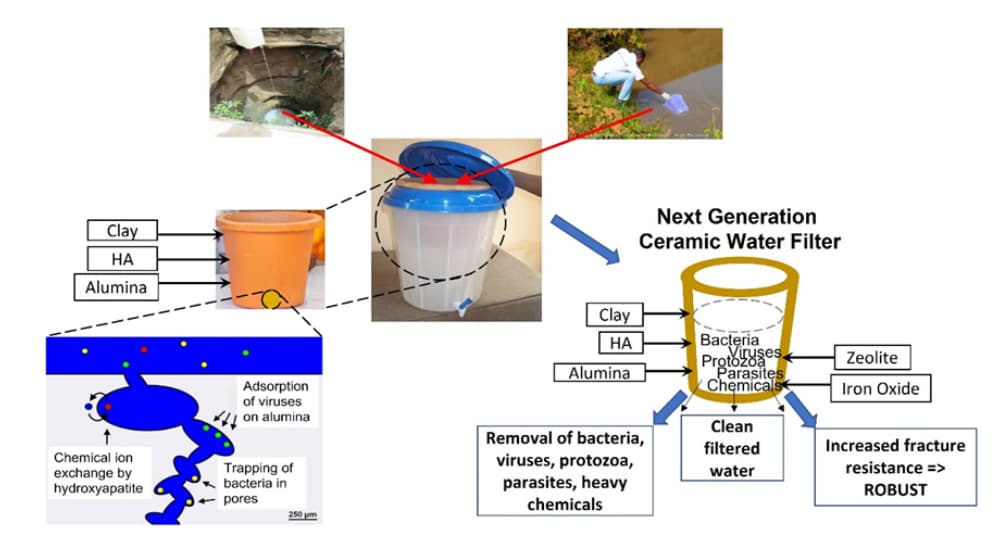Ceramic Water Filters for Household Water Purification in Limited-Resource Settings
FY25 SI-RITEA Type A
Abstract

Many people in limited-resource communities, especially in rural areas in the Global South, do not have access to safe drinking water. For instance, about 11% of the population of Ghana does not have access to safe drinking water and relies on contaminated surface water and groundwater sources, which pose serious public health risks. This project aims to develop the next generation of ceramic water filters that concurrently remove bacteria, viruses, protozoa, and heavy chemicals from water in a way that addresses the potential barriers to implementation, namely: the cost of ownership and the rate at which the filters break. In the first part of the project, we will select low-cost and/or locally available resources (e.g., clay, hydroxyapatite, alumina, iron oxide, kaolin) for the filter design with the goal of maximizing the removal efficiencies of bacteria, viruses, protozoa, and heavy chemicals. In the second part, we will optimize the proportions of additives that will maximize the mechanical properties of filters (e.g., fracture toughness) while achieving high filtration performance exceeding the WHO benchmarks. The successful development of low-cost ceramic water filters with high filtration performance and fracture resistance would facilitate their deployment to provide clean water (SDG #6) and improve the health and well-being (SDG #3) of people in limited-resource communities.
Students Trained
- 2 Undergraduate Students
- 1 Graduate Students
- 1 Postdoctoral Student
Additional Accomplishments
- “We co-hosted an episode of Every Rock Has a Story, where we discussed the impact of our ceramic water filters on providing clean water to low-resource communities. We also provided opportunities to Pine Manor Institute summer students to do hands-on water filter activities to pique their interest in the STEM disciplines. Finally, talked to Chelsea High School students about using these filters for water purification to give them a flavor of how science and engineering can be used for the common good.”“

